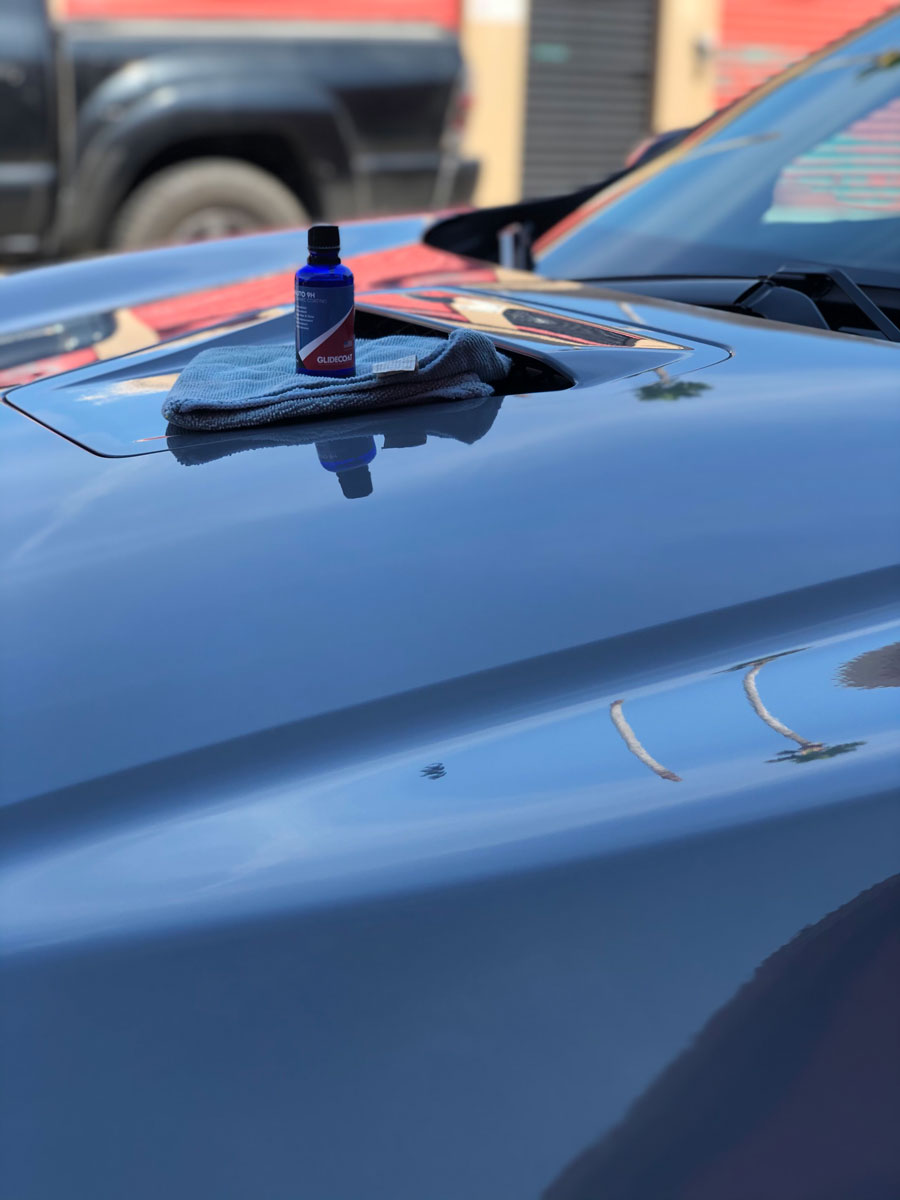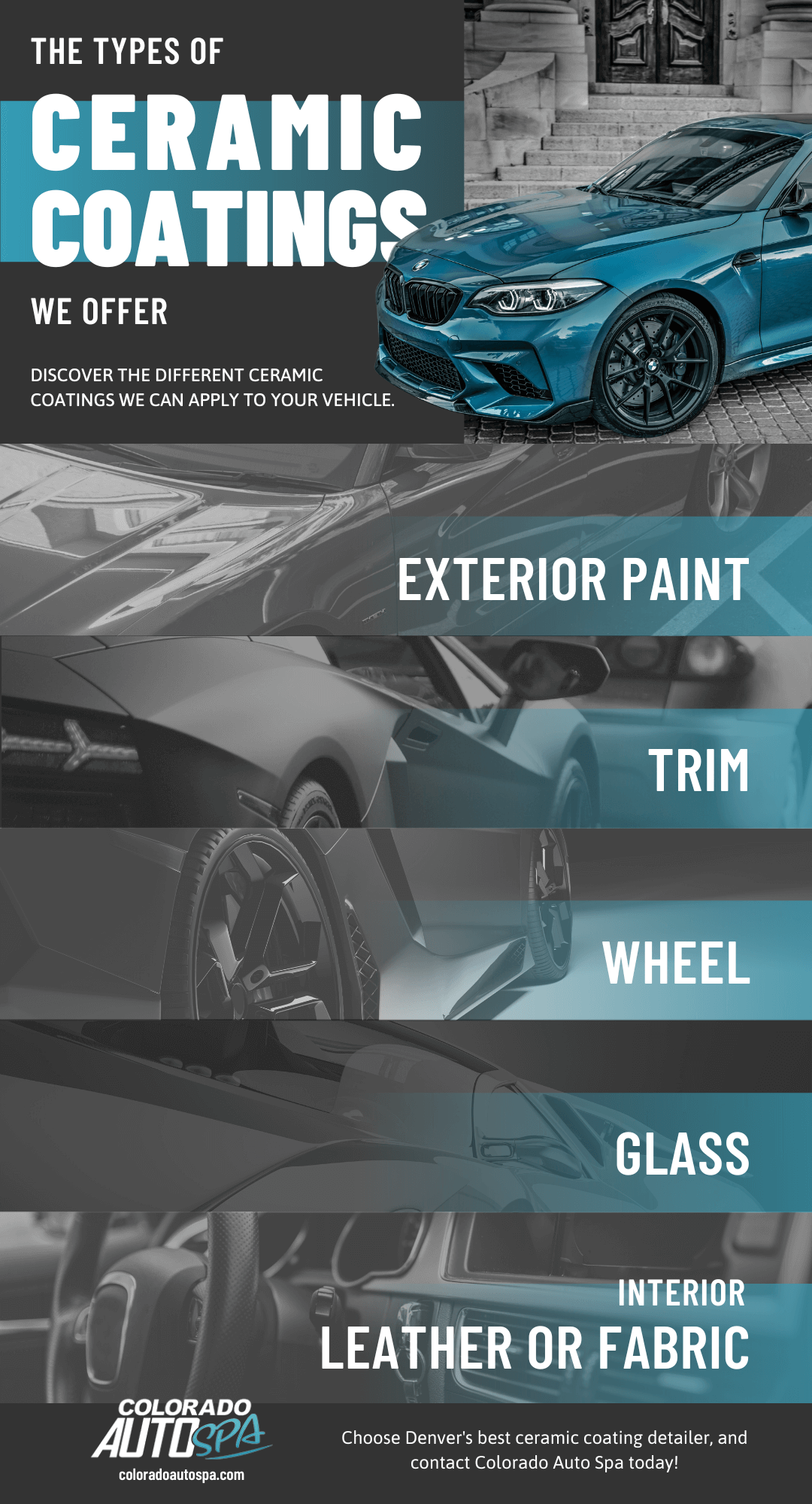Ceramic Coating vs. Traditional Wax: Which is Right for Your Vehicle?
Ceramic Coating vs. Traditional Wax: Which is Right for Your Vehicle?
Blog Article
The Function of Ceramic Coating in Securing Your Automobile's Paint From Environmental Damage
Ceramic layer has actually emerged as a sophisticated service for vehicle proprietors looking for to preserve the honesty of their automobile's exterior. By developing a robust chemical bond with the paint, this innovative modern technology supplies a powerful barrier versus various ecological risks, such as UV rays, acid rainfall, and pollutants. Comprehending the comprehensive benefits and the details of the application process is crucial for maximizing its performance. As we explore the subtleties of ceramic finish, it becomes apparent that the selection to implement this safety step could dramatically influence your car's long life and aesthetic.
What Is Ceramic Finish?
Ceramic finish is an innovative liquid polymer used to the exterior surface areas of a car, developed to give a resilient layer of defense for the paint. This cutting-edge service creates a chemical bond with the lorry's manufacturing facility paint, developing a hydrophobic and resilient shield. The coating includes nanoparticles that fill out the tiny imperfections in the paint, resulting in a smooth surface area that enhances gloss and beam.
Usually, ceramic finishes are available in numerous formulas, enabling different levels of security and longevity. While some items can last for numerous months, others supply defense for numerous years, relying on the density of the application and ecological elements. The application process requires meticulous preparation, including washing, sanitizing, and polishing the car's surface to make certain ideal bond of the covering.

Advantages of Ceramic Finishing
One of the key advantages of using a ceramic coating is the extraordinary protection it supplies to vehicle paint. This advanced finish develops a durable layer that guards the automobile's surface from a selection of ecological hazards, consisting of UV rays, acid rain, bird droppings, and tree sap. By supplying this robust protection, ceramic finishings considerably reduce the threat of fading and etching, protecting the automobile's aesthetic charm with time.
Along with defense, ceramic finishes are renowned for their hydrophobic residential properties, which ward off water and dirt, making it much easier to maintain a tidy car. This self-cleaning impact decreases the regularity of washing, saving both time and resources. Ceramic layers enhance the depth of the paint's gloss, resulting in a polished and vibrant look that boosts the overall look of the vehicle.
One more notable benefit is the long life of ceramic finishings. Unlike typical waxes or sealers that require constant reapplication, ceramic finishes can last a number of years, providing an economical solution for cars and truck owners looking for long-term security. On the whole, purchasing ceramic covering results in boosted resilience, minimized upkeep, and continual aesthetic appeal for automobile paint.
Just How Ceramic Finishing Works
A ceramic finishing operates through a chemical bonding process that develops a safety layer on the automobile's paint surface area. This cutting-edge remedy makes use of sophisticated nanotechnology, where microscopic particles of silica are suspended in a fluid type - ceramic coating. Upon application, these bits bond with the factory paint, developing a hydrophobic and long lasting layer that improves the automobile's surface area
The major part of ceramic layers, silicon dioxide (SiO2), contributes to the layer's toughness and strength. When healed, the coating transforms into a difficult, glass-like coating that shields the paint from ecological pollutants such as dirt, UV rays, bird droppings, and tree sap. This molecular bond causes a surface that is not just resistant to scratches yet likewise much easier to clean, as dust and gunk are less most likely to stick.
Furthermore, the hydrophobic residential or commercial properties of ceramic coatings create water to bead and slide off, lowering the possibilities of water places and mineral down payments. This protective barrier effectively extends the life of the paint and maintains the automobile's aesthetic charm, offering cars and truck owners a long-lasting solution for paint security.
Application Refine of Ceramic Finishing
When considering the application of ceramic finish, prep work is key to accomplishing optimum outcomes. The initial step includes extensively washing the car to eliminate dust, crud, and contaminants from the surface. This typically consists of a purification procedure using clay bars or chemical cleaners to make sure the paint is flawlessly tidy. Any kind of scratches or imperfections must be attended to at this phase, as the coating will certainly bond with the surface area below.

Ceramic finishing is after that applied in tiny areas, normally making use of an applicator pad. It is critical to operate click here for more in also strokes, making certain consistent insurance coverage. The finish needs to be allowed to treat for a defined time, which can differ relying on the item made use of. After the initial application, a premium microfiber towel is utilized to buff the surface area, boosting gloss and making sure a smooth surface. The automobile ought to be left to cure in a regulated atmosphere to allow the layer to totally bond with the paint.
Long-Term Upkeep and Care
Attaining an effective ceramic layer application establishes the structure for long-lasting protection, however proper upkeep is essential to maintaining its advantages. Regular washing is crucial; utilizing a pH-neutral car shampoo will aid preserve the coating's stability without causing damages. Stay clear of automated automobile cleans that use unpleasant materials, as they can jeopardize the coating's surface.

Additionally, using a ceramic coating maintenance spray can improve the existing layer, supplying an added boost in protection and luster. It's a good idea to great post to read execute this every three to six months, depending upon ecological direct exposure.
Last but not least, car parking in shaded areas or utilizing cars and truck covers can protect against prolonged exposure to damaging UV rays and environmental pollutants, additionally expanding the life of your ceramic coating. By adhering to these you could try these out maintenance practices, you can ensure your vehicle's finish remains protected and visually appealing for years to come.
Conclusion
In summary, ceramic coating acts as a crucial protective step for automobile paint, efficiently protecting cars from a variety of environmental threats. Its ability to develop a durable hydrophobic obstacle not only enhances aesthetic allure however likewise substantially decreases the frequency and strength of upkeep needed. The resilient nature of this advanced polymer underscores its worth in maintaining automobile stability and appearance, inevitably adding to a much more sturdy and visually appealing automobile finish.
Ceramic layer is a sophisticated liquid polymer used to the external surfaces of a vehicle, made to supply a resilient layer of defense for the paint. Ceramic layers improve the deepness of the paint's gloss, resulting in a vivid and sleek appearance that elevates the total appearance of the vehicle.
A ceramic layer operates via a chemical bonding process that creates a safety layer on the vehicle's paint surface area.The main element of ceramic coverings, silicon dioxide (SiO2), adds to the finish's stamina and resilience.In recap, ceramic coating offers as a vital protective action for automobile paint, effectively protecting vehicles from a variety of ecological threats.
Report this page